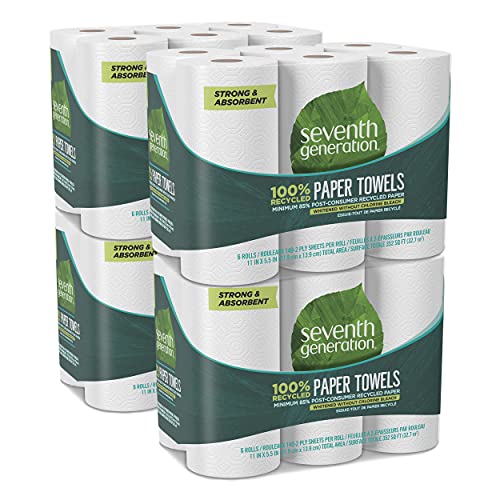
Hey there! Looking to price your recycled paper products? We’ve got you covered with this step-by-step guide. Whether you’re a small business owner or just someone passionate about sustainability, this guide will help you navigate the tricky world of pricing recycled paper products. We understand that it can be quite overwhelming, but don’t worry, we’re here to make it easy and enjoyable for you. Let’s dive in and get those prices just right!
Eco-friendly and Popular Choices!
How Recycled Paper Gets Sorted and Baled | Recycling Paper and Cardboard
Research the market
To conduct market research for recycled paper products, start by understanding the demand and competition in the market. Here’s what you need to do:
- Identify the target audience: Determine who your potential customers are. Are they businesses, individuals, or both? Consider factors such as age, location, and industry to understand their needs and preferences.
- Research demand: Find out how much demand there is for recycled paper products in your target market. Look for statistics, industry reports, and consumer trends that indicate the growth and potential of this market segment.
- Analyze the competition: Identify and analyze the key competitors in the market. Study their product offerings, pricing strategies, marketing tactics, and customer reviews. This will help you understand the market landscape and identify any gaps or opportunities to differentiate your products.
- Understand customer preferences: Conduct surveys, interviews, or focus groups to gather insights into what your target audience prefers in recycled paper products. Understand their specific needs, such as price sensitivity, eco-friendliness, quality requirements, and any other factors that influence their buying decisions.
By conducting thorough market research and understanding your target audience’s preferences, you will be better equipped to develop and market your recycled paper products effectively. Good luck!
Calculate production costs
To determine the cost of producing recycled paper products, you need to calculate the expenses involved in raw materials, labor, equipment, and overhead.
First, gather information about the cost of your raw materials. This includes the price of recycled paper, chemicals, and any other materials used in the production process. Be sure to consider the quantity of each material required for a specific quantity of finished products.
Next, calculate the labor costs. Determine the number of hours each employee spends on producing the recycled paper products and multiply it by the hourly wage. Take into account any additional costs such as benefits or overtime.
Then, assess the cost of equipment. If you own the equipment, calculate the depreciation cost based on its expected lifespan. If you are renting or leasing equipment, include these expenses in your calculations as well.
Finally, factor in the overhead expenses. This includes costs such as rent, utilities, insurance, and administrative expenses. Divide these expenses by the number of units produced to determine the overhead cost per unit.
By adding the costs of raw materials, labor, equipment, and overhead, you can calculate the total production cost per unit of your recycled paper products. This information will help you make informed decisions about pricing, profitability, and cost-saving measures for your business.
Factor in profit margin
To decide on a suitable profit margin that ensures profitability while remaining competitive in the market, follow these steps:
- Research your industry: Start by researching your industry to get an understanding of the average profit margins that other businesses in your sector are operating with. This will help you set a benchmark and provide insights into what is considered competitive.
- Calculate your costs: Determine the costs associated with running your business, including production, materials, labor, overheads, and any other expenses. This step is crucial as it forms the foundation for setting your profit margin.
- Consider your unique value proposition: Assess the value that your products or services bring to customers. If you offer something unique or of higher quality compared to your competitors, you may have more flexibility in setting a higher profit margin.
- Analyze market demand: Evaluate the demand for your products or services in the market. If you have high demand and limited competition, you may be able to set a higher profit margin. However, if the market is saturated with similar offerings, you may need to keep your profit margin lower to remain competitive.
- Factor in your business goals: Consider your long-term business goals while setting your profit margin. If you aim to grow rapidly and establish a strong market presence, you may need to set a lower profit margin initially to attract customers. On the other hand, if your goal is to maximize profitability, you may need to set a higher profit margin.
- Monitor and adjust: Regularly monitor your profit margin and assess its impact on your business. If you find that your profit margin is hindering growth or affecting customer satisfaction, be ready to make adjustments accordingly.
By following these steps, you can determine a suitable profit margin that allows you to remain profitable while staying competitive in the market. Remember, finding the right balance is key, as it ensures the sustainability and success of your business.
Consider environmental impact
To take into account the environmental benefits of using recycled paper and factor it into your pricing strategy, follow these steps:
- Research: Investigate the environmental benefits of using recycled paper compared to virgin paper. Look for studies or reports that highlight the positive impacts, such as reduced deforestation, energy conservation, and lower greenhouse gas emissions.
- Calculate savings: Determine the cost savings associated with using recycled paper instead of virgin paper. Consider factors like reduced raw material costs and potential savings in waste disposal or recycling fees.
- Adjust pricing: Incorporate the environmental benefits and cost savings into your pricing strategy. You can either reduce the price of products using recycled paper or keep the price the same and highlight the environmental advantages as a selling point.
- Communicate the value: Clearly communicate the environmental benefits to your customers. Use labels, marketing materials, or any other means to educate them about the positive impact of their purchase and how it contributes to sustainability.
- Track and evaluate: Monitor the impact of your pricing strategy on customer behavior and sales. Analyze the data to see if the environmental benefits and pricing adjustments are resonating with your target audience and if any further adjustments are needed.
Remember, by considering the environmental benefits of using recycled paper and factoring it into your pricing strategy, you not only contribute to a more sustainable future but also attract environmentally-conscious customers who appreciate your commitment to the environment.
Analyze pricing strategies of competitors
Research the pricing strategies adopted by competitors in the recycled paper products market. Start by identifying your main competitors in the industry. Visit their websites and online stores to gather information about their pricing models. Pay close attention to factors such as product pricing, discounts, promotions, and any other pricing strategies they may be implementing.
Evaluate their pricing models by comparing them to your own. Analyze the pricing structure, profit margins, and value propositions of your competitors’ products. Consider factors such as quality, features, and customer perception when evaluating their pricing strategies.
Based on your analysis, adjust your pricing accordingly. If you find that your competitors are offering similar products at lower prices, consider lowering your prices to stay competitive. On the other hand, if you offer a unique value proposition or higher-quality products, you may be able to justify higher prices. It’s important to strike a balance between being competitive and maintaining profitability.
Regularly monitor and update your pricing strategy to stay ahead of the competition. Keep a close eye on your competitors’ pricing changes and adjust your prices accordingly. By continuously evaluating and adjusting your pricing strategy based on your competitors’ strategies, you can effectively position your recycled paper products in the market.
Test and refine pricing
To implement your pricing strategy and monitor its effectiveness, it is important to follow these steps:
- Gather customer feedback: Engage with your customers and gather their feedback regarding your pricing. This can be done through surveys, interviews, or by closely monitoring customer satisfaction and complaints. Listen to their concerns, suggestions, and preferences to gain valuable insights into how your pricing strategy is perceived by your target market.
- Analyze market dynamics: Stay updated on market trends, competitor pricing, and industry changes that may affect your pricing strategy. Keep an eye on supply and demand, changes in customer preferences, and any external factors that might impact the value of your product or service. This analysis will help you understand the dynamics of the market and make informed decisions about adjusting your pricing.
- Make adjustments: Based on the feedback received and market dynamics, it is crucial to make necessary adjustments to your pricing strategy. This may involve revising your pricing structure, introducing new pricing tiers, offering discounts or promotions, or even repositioning your product in the market. Continuously monitor and evaluate the impact of these adjustments to ensure they align with your business goals and resonate with your customers.
Remember, implementing and refining your pricing strategy is an ongoing process. Regularly reassess and adapt your pricing based on customer feedback and market dynamics to stay competitive and maximize profitability.
Closing thoughts and recommendations
In conclusion, pricing recycled paper products requires careful consideration and research. By thoroughly examining production costs and profit margins, and taking into account market conditions and customer feedback, you can establish a pricing strategy that maximizes both sustainability and profitability. Remember, pricing is not a one-time decision, but an ongoing process that should be adjusted as needed. So, go ahead and confidently price your recycled paper products, knowing that you have done your due diligence and are offering a fair value to both your customers and the environment.
Green Pricing Hacks
Find sustainable solutions for your paper needs
My Oh-So-Organized Filing System
Hot seller. 50% commission for sellers...very low return rate. Will help your readers get rid of paper clutter, and have all their paperwork so organized that they'll be able to find what they need in 10 seconds or less. Includes bonuses!











